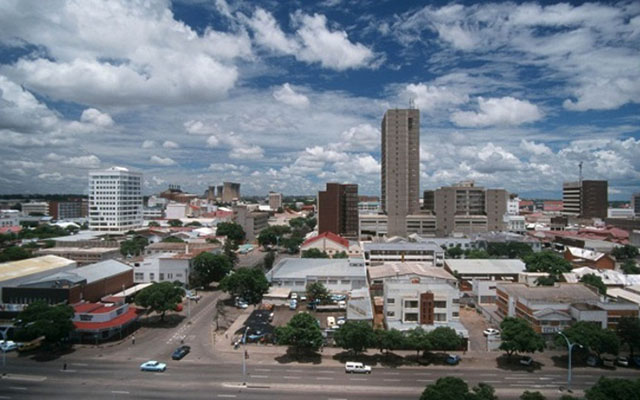Bulawayo: A historically ordained SEZ


If Bulawayo, as a SEZ, is to coax investments from South Africa, it has to adopt unique incentives that make it attractive for companies to operate profitably within the precinct of the SEZ
Darlington Musarurwa Deputy News Editor
Shenzhen, a major city in Guangdong Province, south east China overlooking Hong Kong, presents a story of the success of Special Economic Zones (SEZs) as an economic reform project. Shenzhen was one of the first cities in China to be chosen for the experiment and if there is one place on earth that has the same conditions and circumstances that led to Shenzhen’s runaway success — it is definitely Bulawayo in Zimbabwe.
The similarities between Shenzhen then and Bulawayo now are too striking to ignore. When Deng Xiaoping – Chinese leader after 1978 and the godfather of its reform process — designated Shenzhen as a Special Economic Zone (SEZ), it was nothing more than a small fishing village on the South China Sea coastline, an economic backwater. The same can be said of Bulawayo in this new age: the 2012 national census curiously indicated that 27 percent of Bulawayo’s economically active population was unemployed, which is the highest in the country.
Its economic circumstances are nothing short of desperate. But, rather fortuitously, just as Shenzhen was, and still is, separated by a river (Shum Chun or Shenzhen River) “from the most capitalistic city on earth” — Hong Kong — so, too, is the southernmost part of Zimbabwe, which is separated by the Limpopo River from arguably the most capitalistic city on the continent, Johannesburg.
To put this into perspective, the Johannesburg Stock Exchange (JSE), which is the largest in Africa, has a total market capitalisation that is close to US$1 trillion. So, just as Shezhen managed to leverage on Hong Kong’s capital, Bulawayo can also do likewise. This might seem hypothetical, but historically this has always been the case. Because of its proximity to South Africa, Bulawayo has always been the favoured destination for foreign capital and enterprise, especially from South Africa.
The re-establishment of the Rhodesian Stock Exchange (now Zimbabwe Stock Exchange) in 1945 after a 43-year hiatus was mainly driven by Bulawayo businessmen, who wanted to consolidate the region’s manufacturing base, which was buoyed by the demand created by World War 2. It is, however, important to note that most of the influential foreign firms in the colonial era, including the British South Africa Company (BSAC), which led the occupation of Zimbabwe, tapped their resources from either the Johannesburg Stock Exchange or the London Stock Exchange (LSE).
The BSAC itself was listed on the LSE.
George Karekwaivenani of the Department of Economic History at the University of Zimbabwe (UZ) notes in his academic paper titled “A history of the Rhodesian Stock Exchange: The Formative Years, 1946 to 1952” that by 1894, five Rhodesian companies were listed on the LSE, while seven were listed on the JSE.
Most importantly, he also indicated that earlier, when the Bulawayo Stock Exchange was established in 1894, it also “became closely linked to Johannesburg and it promptly registered an astonishing 15 million pounds worth of shares in 1894 and 1895”.
As policymakers devise the most practicable formula to make Bulawayo as a SEZ workable, this historical advantage, which still exists to this day, might be worth considering.
Similarly, as a new economic policy that was designed to chart a previously uncharted course for China, the SEZ experiment was conducted away from the bureaucratic capital of Beijing. This meant that there was little interference from the capital, which at the time was obsessed by the planned economy. According to Wu Xiaibo, in “China Emerging (1978-2008): How Thinking About Business”, Shenzhen, which was far away from the administrative influences of Beijing, was given carte blanche to pursue its own path to economic development.
“Since heaven is high and the emperor far away, the coastal areas of the southeast were far removed from the interior and only weakly influenced by the planned economy,” he said. Again, the same can be said for Bulawayo, which is far removed from the bureaucracy and administrative shackles of the capital, Harare.
But the lesson that is learnt from China’s SEZs project is not so much the template, but the ability to implement country-specific reforms that are suited to the local environment. So, there is need to explore a path of “gradual reform with Zimbabwean characteristics”, as the Chinese would say. Policymakers, therefore, need to be braver and consistent in seeing through reforms otherwise the whole experiment will fail. If Bulawayo, as a SEZ, is to coax investments from South Africa, it has to adopt unique incentives that make it attractive for companies to operate profitably within the precinct of the SEZ.
Granted, the Bulawayo City Council (BCC) is one of the best run, if not the best run city in the country, but that alone is not enough. It must take advantage of Government’s current doing business reforms, which now cover local authorities, to create a package that is attractive enough for investors. A comprehensive master plan or white paper for the project is needed.
The centrality of Zimbabwe to the region and also as a gateway from Africa’s biggest economy to the continent is a geographical advantage that has to be capitalised on. However, the fact remains that Zimbabwe is not as competitive as it ought to be. As is always highlighted by local competitiveness reports, the cost of labour remains relatively high than regional averages and utility costs are also prohibitively high.
In the same way, Chinese authorities were braver in implementing painful reforms, a master plan to make Bulawayo attractive should necessarily involve lowering wages within the SEZ and coming up with unique water and electricity costs that are attractive to investors. Though coal as a source of energy is relatively pricey than other forms of power such as hydroelectricity, most of the mines are nearer Bulawayo than Harare, so it can be ideally used for the SEZ.
Such reforms encapsulate the thinking behind “special economic zones” — creating unique conditions for economic take off. Though creating new conditions does not entail discarding the ideological leanings of Government on such policies and indigenisation and empowerment, it involves tempering ideology with pragmatism, just in the same manner China mixed its socialist ideology with positive forces of the market economy.
But the critical lesson that is learnt from economic reforms and implementing such projects is staying the course and adjusting as new challenges arise.
The success of SEZ wasn’t as smooth as initially thought. In its formative years, Shenzhen’s SEZ had four development goals: driving exports, importing advanced technology, emphasising on foreign investment and making industrial development primary. Sadly, in the initial stages of reform, this was not always the case. Imports far exceeded exports and Chinese companies relied on mainly old equipment discarded by Hong Kong and Japan. Also, retail trade, rather than industrial development, thrived.
The disparities between two co-existing economic structures created a conducive environment for rent-seeking and arbitrage. But through constantly tweaking the system, it eventually worked out well for the Chinese government. According to Xiaobo, through the SEZ experiment, “the basic cellular mechanisms of China’s economy began to regenerate”. This can also apply to Zimbabwe. In view of the foregoing, it is therefore fitting for the Confederation of Zimbabwe Industry (CZI) Matabeleland chapter to call for the whole of Bulawayo to be turned into a special economic zone.









Comments